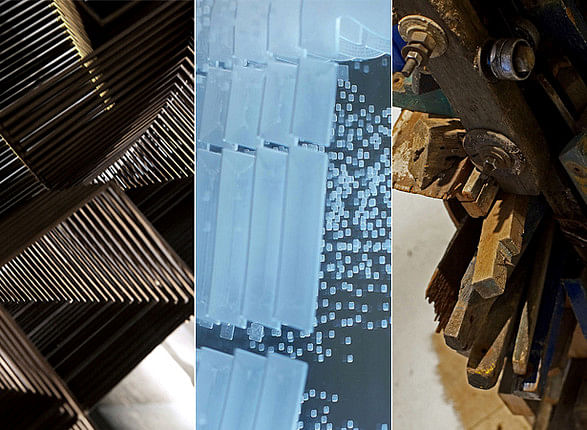Muhon: Traces of an Adolescent City, Pavilion of The Philippines at the 15th Venice Architecture Biennale
Saturday, May 28, 201610 AM — Sunday, Nov 27, 20166 PMCEST
Venice, IT | Palazzo Mora
Related
Muhon: Traces of an Adolescent City, the selected exhibit for The Philippines' National Pavilion at the 15th International Architecture Exhibition at the Venice Architecture Biennale, has gathered the country’s foremost architects and contemporary visual artists to be part of the country's historic first participation in the Venice Architecture Biennale.
The exhibit’s curator Leandro V. Locsin Partners (LVLP) has invited six architects and three contemporary artists to start a conversation about the rapid creation and destruction of Metro Manila’s built heritage and whether such a condition precludes the formation of the city’s cultural identity. The curatorial team is composed of Leandro Locsin, Jr., Sudarshan Khadka, Jr., and Juan Paolo de la Cruz.
The nine participants surveyed buildings, structures, landmarks, boroughs, and urban landscapes, and evaluated their cultural merit and analyzed their potential as national heritage. After which they created three sets of abstracted models built for each of the subjects corresponding to their original state, their current condition, and their projected future.

The intent is to abstract and distill the essence of these muhons or markers in order to explore the presence or absence of significant value. The three rooms of the Philippine Pavilion have been categorized as — (1) Imprints, (2) Markers and (3) Projections, and the three abstractions of each subject will be distributed accordingly.
The individual architects and firms are Eduardo Calma, Jorge Yulo, 8x8 Design Studio Co., C|S Design Consultancy, Lima Architecture, and Mañosa & Co. Inc. The internationally recognized Filipino contemporary artists, represented by 1335 Mabini—Poklong Anading, Tad Ermitaño, and Mark Salvatus—complete the list.
The subjects that will be featured in the Pavilion are:
- KM 0 in Luneta (Anading)
- Pandacan Bridge (Ermitaño)
- Chinatown (Salvatus)
- Philippine International Convention Center (Calma)
- Mandarin Hotel (Yulo)
- Magsaysay Center (8x8 Design Studio Co.)
- Pasig River (C|S Design Consultancy)
- Makati Stock Exchange (Lima Architecture), and Coconut Palace (Mañosa & Co.)
With the main impetus being the destruction of post-war brutalist buildings and urban features, LVLP aims to underscore the urgency of inclusive public conversations about the relationship of the built environment and the identity of the city.
Muhon aims to extract conjectures that reconcile the diametrically opposed vectors of progress and of permanence in relation to corresponding notions of modernity and an emerging identity. Simultaneously, it aims to make sense of the implications of the destruction of signifiers of built heritage and the lack of social consciousness about this issue. LVLP’s exhibit aims to be a venue for a collaborative and collective act of contemplation about the built environment to transpire.
Text via.
More related info at philartvenicebiennale.com or on Facebook.

Share
0 Comments
Comment as :